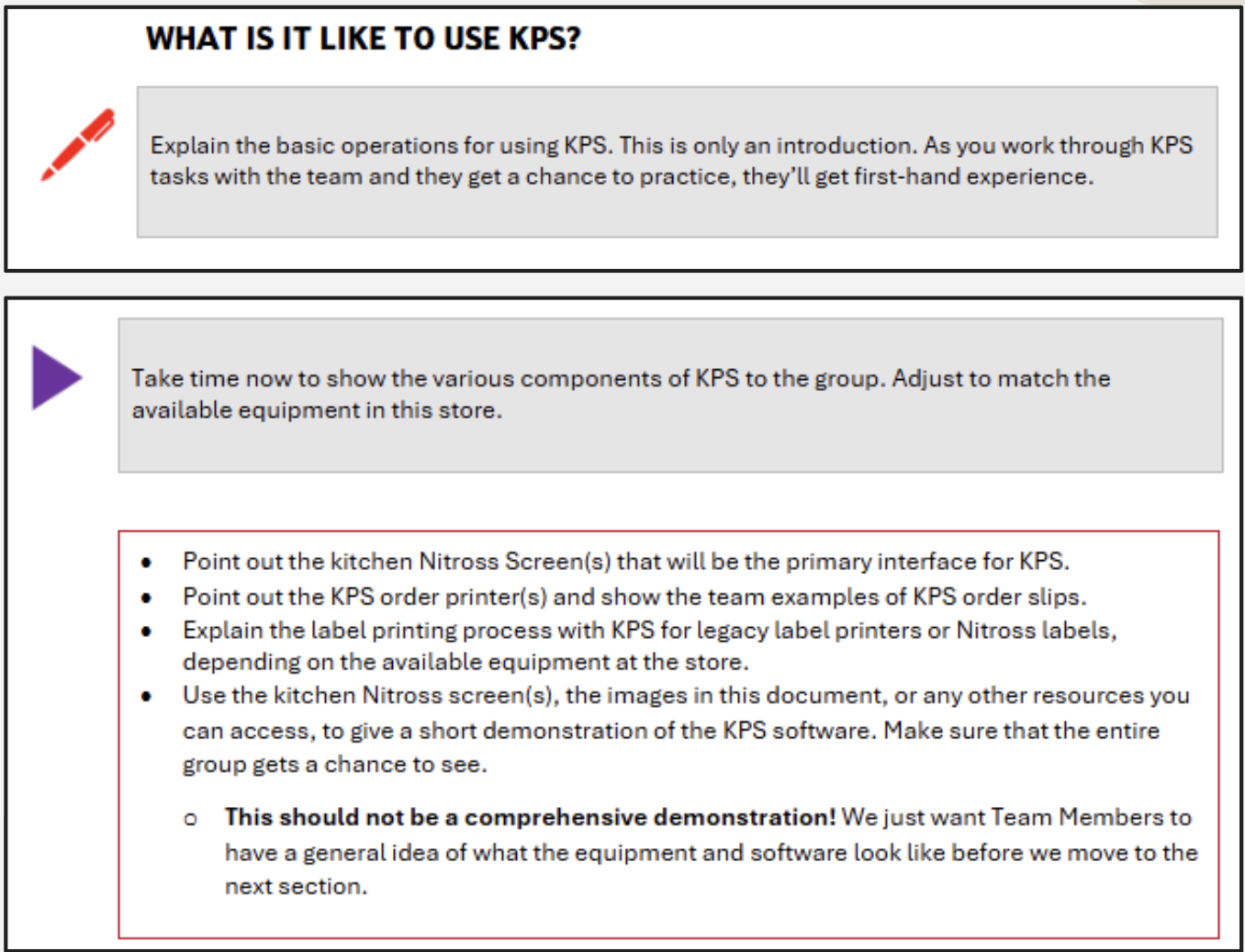Kitchen Production Software Training
This training was designed to empower team members to utilize a smart scheduler that enables stores to make the right amount of food at the right times for customers with minimal waste.
Audience
Store team members in a retail setting
Approach
ADDIE, Experiential Learning Theory, Social Constructivism, Kirkpatrick’s Model of Evaluation
Tools
Articulate Storyline, Camtasia, Adobe
Process
To start, my main focus was on understanding the KPS software and its impact on store operations. I collaborated cross-functionally to identify key performance gaps and critical processes.
From there, I sketched comprehensive storyboards and quickly brought them to life in Articulate. To accommodate social constructivist principles, I developed hands-on training guides for Food Safety Managers.
Once I had the initial training materials ready, I conducted pilot testing in select stores. This allowed me to collect valuable feedback on both the e-learning components and in-person training sessions.
Finally, implementation was aligned with software deployment. Throughout this process, I used Kirkpatrick's Four Levels model to measure effectiveness, continuously refining the training based on learner reactions, knowledge checks, behavioral observations, and task execution rates in the KPS system. This data helped me continuously revise and refine the tool.
Learning Modules
Diverse modules within the training offered a blend of insights, first-hand testimonials, and in-depth tutorials, reinforcing each learner's understanding of the subjects.
Accessibility was prioritized as a key consideration, with every learner granted access to captions and scripts for all video materials within the lesson. These measures ensured that each learner had the necessary resources to fully grasp and engage with the lesson content, promoting broader participation and comprehension.
Training Guides
The training guides empowered trainers to facilitate engaging discussions, ask thought-provoking questions, and deliver hands-on demonstrations. This approach not only heightened learner engagement but also fostered a deeper understanding of the content by allowing learners to experience and apply concepts directly. The structured design of these guides helped to scaffold the learning process, ensuring a gradual and comprehensive grasp of the knowledge throughout the training. This, in turn, facilitated a learning environment that truly catered to the 'learn-by-doing' pedagogical approach.
Interactive Content
Involving learners through interactive simulations played a critical role in the learning process. It provided the opportunity to familiarize themselves with the software in a risk-free setting, enabling them to learn not just by instruction, but also by doing. This environment for experimentation promoted an in-depth understanding of the software and fostered confidence. By allowing learners to make mistakes and learn from them, the simulations mirrored real-world scenarios, thereby making the learning experience more engaging and effective.
Reflection
The process of creating the Kitchen Production Software Training has provided me with several key takeaways.
Authoring Tools: This project allowed me to incorporate advanced interactions in Articulate Storyline 360 by using states, variables, and conditions, which pushed my skill set and knowledge of the authoring tool.
Peer Learning: As businesses continue to leverage peer-to-peer learning, I believe this training would have been an excellent use case for training partners in the field. I hope to continue to push for their expertise in the future as they are an asset to any business or organization.
Data: It has been a thrilling experience observing and analyzing the data from evaluation. In the future, I would like to continuously analyze the data thoroughly to improve the modules and get more user feedback from Food Managers who implement the in-person training experience, especially as this evolves over time.
Transforming workplace learning into fulfilling, empowering experiences.

